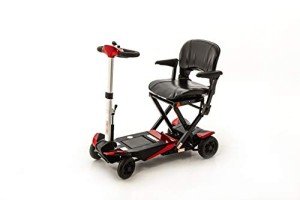10 Mobility Aids Tricks All Experts Recommend
Understanding Mobility Aids: Enhancing Independence and Quality of Life
As society continues to age and individuals significantly look for methods to preserve self-reliance, the demand for mobility aids has never ever been more important. Mobility aids, which include a variety of devices designed to help people with walking or moving, play an essential role in promoting mobility, improving security, and improving overall lifestyle. This article will check out the different kinds of mobility aids, their benefits, considerations for choice, and answer some often asked concerns.
Types of Mobility Aids
Numerous mobility aids are offered, each created to attend to particular needs. The following table sums up a few of the most typical kinds of mobility aids and their features.
Kind Of Mobility Aid
Description
Best Suited For
Key Features
Walking sticks
A portable stick offering support and balance.
Individuals who require very little support.
Light-weight, portable, adjustable height.
Walkers
Four-legged frames supplying stability.
Those needing substantial support while walking.
Foldable, some with wheels, added safety functions.
Rollators
Wheeled walkers with a seat for resting.
People needing mobility with the choice to rest.
Brakes, baskets for individual products, adjustable height.
Wheelchairs
Chairs with wheels for people with minimal mobility.
Those unable to stroll or requiring comprehensive assistance.
Manual or powered choices, customizable seating.
Scooters
Motorized devices for bigger distances.
Individuals with restricted endurance however needing independence.
Different sizes and designs, frequently easily transportable.
Crutches
Assistance devices placed under the arms or lower arms.
People recovering from lower limb injuries.
Adjustable, lightweight, requires upper body strength.
Stairlifts
Mechanical devices for moving in between floors.
Users facing obstacles in multi-level homes.
Adjustable for various staircases, automated.
Advantages of Mobility Aids
Mobility aids offer a range of advantages that can substantially improve the lives of people dealing with mobility obstacles. Some significant advantages consist of:
Increased Independence: Mobility aids empower people to move easily without relying on others for help, consequently enhancing their self-confidence and self-confidence.
Improved Safety: Using mobility aids can reduce the risk of falls and injuries, especially for older adults or those with balance concerns.
Improved Quality of Life: By facilitating mobility, individuals can engage in social activities, attend events, and take pleasure in life more completely, contributing to much better emotional and mental health.
Rehabilitation Support: After surgery or injury, mobility aids supply necessary assistance and stability, aiding in healing and rehab processes.
Ease of access: Many mobility aids are developed to be used both indoors and outdoors, ensuring that individuals can browse different environments with ease.
Elements to Consider When Choosing Mobility Aids
Picking the suitable mobility aid needs careful factor to consider of a number of aspects, including:
Factor
Factors to consider
User's Needs
Evaluate the level of mobility required; consider whether the user requires temporary or long-term help.
Physical Limitations
Evaluate the user's strength, balance, and coordination to identify the best kind of aid.
Setting
Consider the primary environments where the aid will be used, such as home, outdoors, or particular surfaces.
Weight and Portability
Make sure that the picked gadget is manageable relating to portability and storage, particularly for outside usage.
Spending plan
Mobility aids been available in a variety of rates; consider insurance coverage and available financing options.
Adjustability
Select aids that can be changed for height and convenience to accommodate growth or changing needs.
Regularly Asked Questions About Mobility Aids
1. How do I know if I require a mobility help?
Lots of aspects can signify the requirement for a mobility help, such as trouble strolling or balancing, tiredness while standing, or a current surgical treatment impacting mobility. Consulting with a health care expert can supply guidance customized to private requirements.
2. What kinds of mobility aids are covered by insurance?
Coverage differs in between insurance companies, however the majority of supply options for resilient medical devices, which usually includes wheelchairs, walkers, and some kinds of walking canes. Talk to your insurance provider for specific coverage info.
3. Can mobility aids be used outdoors?
Yes, numerous contemporary mobility aids are developed for outside use. Rollators, scooters, and some walkers are equipped with features for stability and ease of use on numerous terrain.
4. How do I preserve my mobility aid?
Regular upkeep includes examining for any wear and tear, guaranteeing that parts such as wheels, brakes, and frames are operating properly, and cleaning the equipment as needed. Following the manufacturer's guidelines is important for security.
5. Is there a risk of becoming reliant on mobility aids?
While some users may become reliant on mobility aids, they are developed to promote self-reliance and mobility. Gradually using My Mobility Scooters can improve confidence and aid retain physical strength and coordination.
Mobility aids are important tools that empower individuals to overcome physical challenges, promoting self-reliance and improving quality of life. By comprehending the different types of mobility aids readily available, their advantages, and crucial elements for consideration, households and caregivers can make educated choices that best satisfy the needs of their enjoyed ones. With the right assistance, those with mobility obstacles can lead satisfying and active lives, totally free to explore the world around them.
